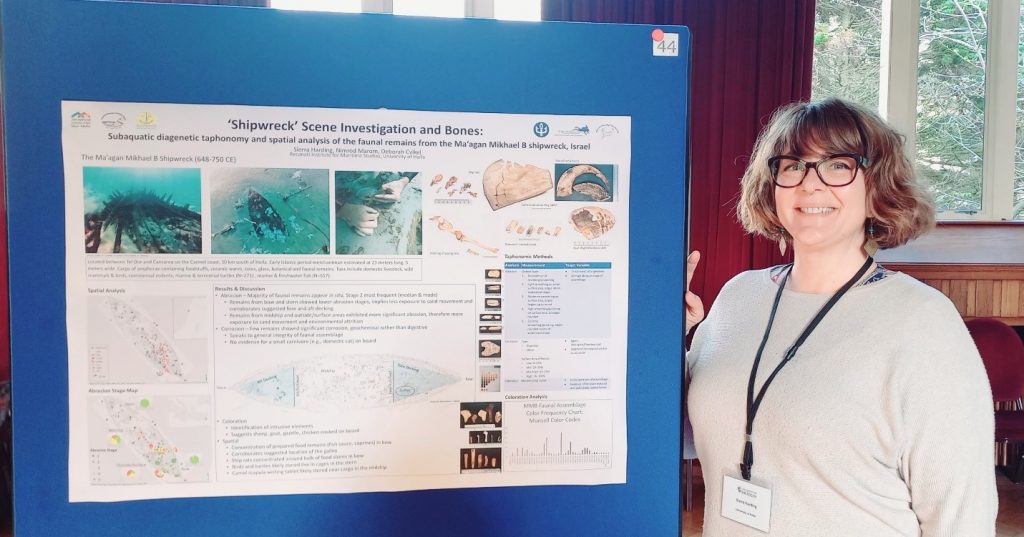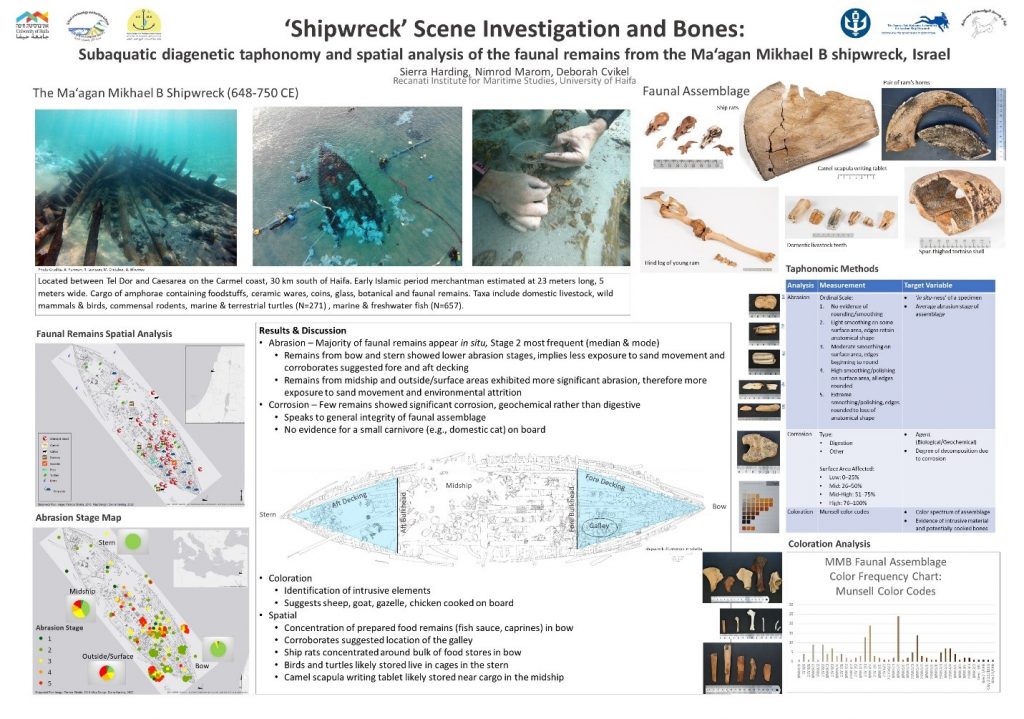Sierra Harding, PhD candidate, reporting from the United Kingdom Archaeological Sciences Conference (UKAS) at the University of Aberdeen
This short report describes my participation in the United Kingdom Archaeological Sciences Conference (UKAS) at the University of Aberdeen, 20-22/04/2022. I presented my poster entitled ‘Shipwreck Scene Investigation and Bones: Subaquatic diagenetic taphonomy and spatial analysis of the faunal remains from the Ma‘agan Mikhael B shipwreck, Israel’. This poster represented a portion of the work completed in my MA thesis, including the GIS and diagenetic taphonomy methods that I utilized in the faunal analysis. Deposition in the marine environment subjects osteological materials to geochemical and taphic processes that do not occur in terrestrial archaeological sites. The effect of subaquatic diagenesis on bones and teeth challenges traditional interpretations of zooarchaeological remains and needs more scholarship. This is likely due in part to the paucity of animal remains recovered from inundated sites, such as shipwrecks. The Ma‘agan Mikhael B shipwreck (mid-7th–mid-8th centuries CE), located on the Carmel coast of Israel, yielded an extraordinarily preserved assemblage of diverse animal bones and teeth. The eastern Mediterranean sandy substrata into which she sank provided an ideal depositional environment for the preservation of organic remains. Adaptation of conventional diagenetic taphonomic assessments utilized in terrestrial zooarchaeological studies described the state of preservation of the faunal assemblage in a more meaningful way for the marine context, as well as spoke to the integrity of the shipwreck’s faunal assemblage (in situ-ness). Additionally, a GIS spatial analysis of the distribution of animal remains throughout the shipwreck shed light on site formation processes, as well as inferred some aspects of nonextant antique Mediterranean naval architecture. The subaquatic diagenetic taphonomy analysis of the Ma‘agan Mikhael B’s faunal assemblage observed and recorded multiple aspects of surface modifications present on archaeological bones, including abrasion stage, corrosion levels, and coloration. A novel ordinal scale of observed abrasion stages (c.f. weathering stages) was created during this research, as this was not available in the existing literature. Presence/absence and degree of corrosion was recorded, and coloration was standardized using the Munsell color chart. The location of each faunal remain (NSP=241, excluding fish bones) recovered from the shipwreck site was recorded in a GIS map. Identifying the agent or process responsible for each surface modification and observing the spatial patterns of these phenomena enabled a more nuanced interpretation of the assemblage, akin to the field of forensics where each trace leads the crime scene investigators closer to recreating the ‘scene of the accident’. The examination of taphonomic factors provided further evidence of the ship’s original architecture, informed upon the integrity of the shipwreck site, and elucidated aspects of eastern Mediterranean shipwreck site formation processes. Future in-kind analyses of subaquatic diagenetic taphonomy and spatial analysis will enable inter-site comparison between faunal assemblages from shipwrecks and other types of submerged sites.
Conference delegates were fascinated by the faunal assemblage and the story of the Ma‘agan Mikhael B, which is of course still developing as our research is ongoing. The conference was extremely interesting, with many talks discussing stable isotopes and ancient DNA methodologies in the UK, the Mediterranean, and beyond. I was also able to network with potential collaborators on future projects with materials from Israel. Many thanks again for the support to attend this important conference focusing on archaeological sciences.




